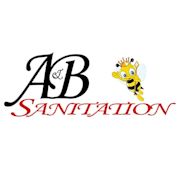Ad
related to: Septic SystemsYour Septic System Is a Vital Part of Your Home, Don't Neglect It! Call Today for Service.
Search results
Aug 7, 2023 · Learn about the different designs and factors of septic systems, from conventional to alternative technologies. See illustrations and descriptions of ten common types of septic systems and their advantages and disadvantages.
Aug 7, 2023 · Learn how a typical septic system consists of a septic tank and a drainfield that treat wastewater from household plumbing. Find out how alternative systems use different methods to remove or neutralize pollutants and discharge wastewater to the soil.
- SEPTIC TANK. After passing from the house, the wastewater collects in the septic tank. Septic tanks typically range from 1,000 to 2,000 gallons and are made of concrete, heavy plastic, or metal.
- Leach Field. The leach field (also called a “drain field”) consists of rows of perforated pipes typically buried in gravel trenches 18 to 36 inches below grade — deep enough to avoid freezing, but close enough to the surface to allow air to reach the bacteria that further purify the effluent (see illustration below).
- SIZING THE LEACH FIELD. For the system to work well, the leach field must be properly sized for the soil type and volume of wastewater, typically based on the number of bedrooms.
- SEPTIC SYSTEM CARE & MAINTENANCE REQUIRED. Treat your system well and you will be rewarded with years of trouble-free service. Periodic pumping of the septic tank is essential to remove the solids (sludge) and grease layer (scum) from the tank.
- Conventional System. This is the system you’ll usually see at a single-family home or a small business. In a conventional system, your waste goes to a septic tank.
- Chamber System. A sister to the conventional system is the chamber system. They started getting popular in the early 90s. As technology got better, people realized that they could do away with the gravel pits in the conventional system.
- Conventional Pump System. In this flow diagram, we take another step. Between the distribution box and septic tank, there is a pump tank. Why use a pump, you ask?
- Aerobic Treatment Unit. An Aerobic Treatment Unit is also called an ATU. In an ATU, you will see properties that are reminiscent of a sewage plant. It uses a lot of the same principals and science, actually.
Learn how septic tanks, fields, and pumps treat wastewater and prevent pollution. Find out how to keep your septic system healthy and avoid costly repairs with regular maintenance and smart habits.
Aug 7, 2023 · Learn about septic systems, how to care for them, maintain them, and comply with regulations. Find answers to common questions on septic system types, design, location, permits, and environmental impacts.
Dec 4, 2018 · Learn about septic systems, which treat and dispose of wastewater from households and businesses not served by public sewer. Find out the benefits, problems, regulation, and terminology of septic systems in the US.





